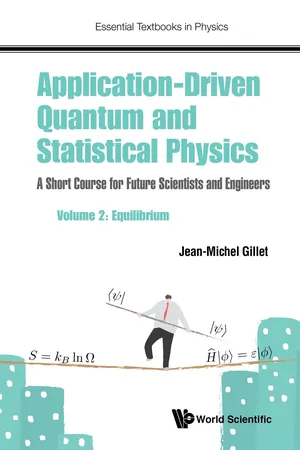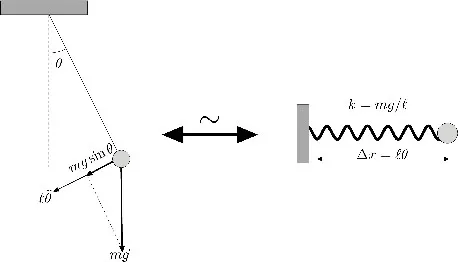
Application-Driven Quantum and Statistical Physics
A Short Course for Future Scientists and Engineers - Volume 2: Equilibrium
- 336 pages
- English
- ePUB (mobile friendly)
- Available on iOS & Android
Application-Driven Quantum and Statistical Physics
A Short Course for Future Scientists and Engineers - Volume 2: Equilibrium
About This Book
Bridging the gap between traditional books on quantum and statistical physics, this series is an ideal introductory course for students who are looking for an alternative approach to the traditional academic treatment.
This pedagogical approach relies heavily on scientific or technological applications from a wide range of fields. For every new concept introduced, an application is given to connect the theoretical results to a real-life situation. Each volume features in-text exercises and detailed solutions, with easy-to-understand applications.
Building on the principles introduced in Volume 1, this second volume explains the structure of atoms, the vibration and rotation of molecules. It describes how this is related to thermodynamics through statistical physics. It is shown that these fundamental achievements help to understand how explosives and CO₂ can be detected, what makes a gecko stick to the ceiling, why old stars do not necessarily collapse, where nuclear energy comes from, and more.
Contents:
- Model Hamiltonians and Approximations:
- Vibrating Systems
- Rotating Systems
- Spin, a New Degree of Freedom
- Central Coulombic Potential
- The N -electron Atom
- Statistical Treatment of Large Assemblies at the Classical Limit:
- Thermodynamics in the Macroworld
- Isolated Systems of Particles
- Regulated Systems of Classical Particles
Readership: Undergraduate students who need a concise introduction to quantum and statistical physics. Graduate students who want to return and learn about the subject from a different perspective.
Key Features:
- Conciseness
- Emphasis on easy-to-understand applications
- Exercises in the text with detailed solutions
- Focus on applicable concepts (very little physics for its own sake)
- Detailed index
- Additional explanations on essential points which (over the years) have proved to be a recurrent difficulty for the student
Frequently asked questions
Information
Part I
Model Hamiltonians and Approximations
1
Vibrating Systems

1.1.On the Role of Harmonic Oscillators in Physics
1.1.1.The pendulum example


1.1.2.A more general perspective
Table of contents
- Cover
- Halftitle
- Title
- Copyright
- Preface
- About the Author
- Contents
- Part I Model Hamiltonians and Approximations
- Part II Statistical Treatment of Large Assemblies at the Classical Limit
- Bibliography
- Index